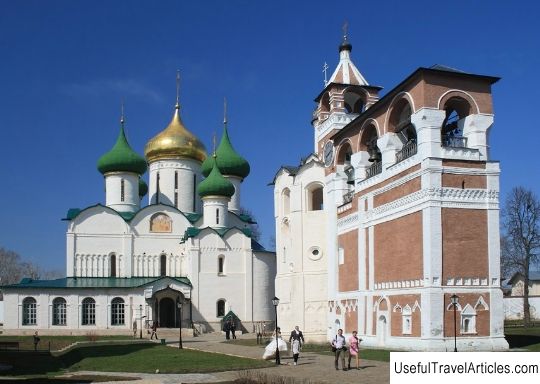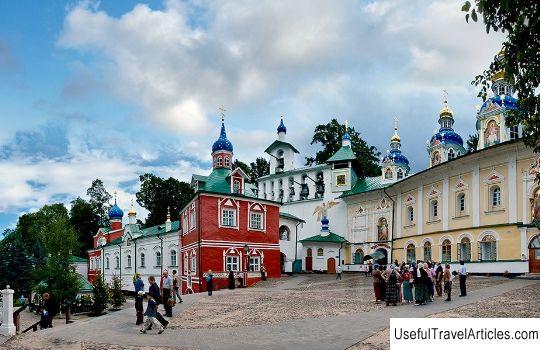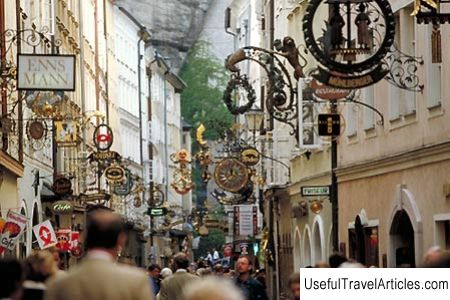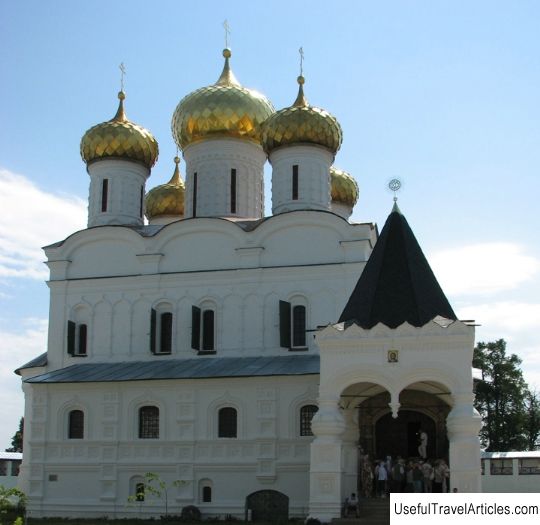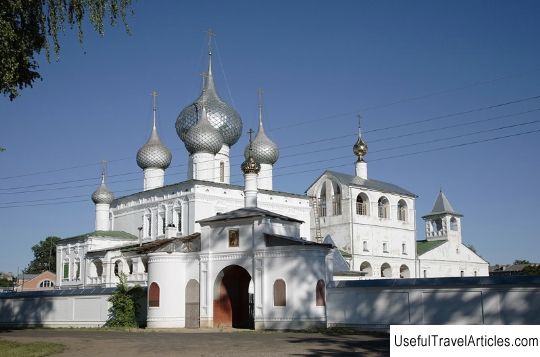Belfry of the Ipatiev Monastery description and photos - Russia - Golden Ring: Kostroma
Rating: 7,8/10 (685 votes) 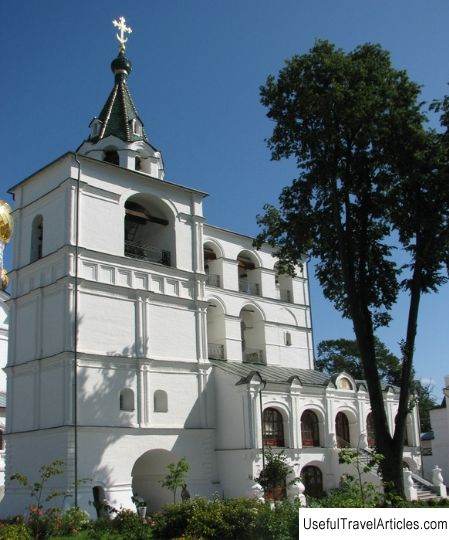
Belfry of the Ipatiev Monastery description and photos - Russia - Golden Ring: Kostroma. Detailed information about the attraction. Description, photos and a map showing the nearest significant objects. Photo and descriptionThe main temple of the Ipatiev Monastery is the Trinity Cathedral. To the south of the temple is a belfry, the bells of which have been ringing in the monastery since the middle of the 16th century. In 1586-1590. built a stone belfry with a round top. No information about the bells of the first monastery belfry has been found, despite the fact that it existed for quite a long time. In 1763-1764. she, together with the brotherly and kelar cells, was rebuilt, and in 1812 it was dismantled. & nbsp; The belfry, which has survived to our time, was erected in 1603 a dozen meters from the Trinity Cathedral. Its height was about 30 m, length - 19-20 m, width - 5-6 m. The belfry of the Ipatiev Monastery is a three-tiered structure in the second and third tiers with arches for bells. The first tier is most likely used for economic purposes. The second tier housed the clockwork, the third one housed the bells. Internal staircases led from one tier to another. Presumably, the appearance of this type of belfry in Russian temple architecture is associated with the transition from the usual method of ringing or swinging bells to ringing “in tongues”. For the new method, the elongated structure of the structure was quite convenient. The clockwork on the belfry is one of the oldest in Russia. The first clocks were damaged during the siege of the monastery by Polish troops, but in 1628 Tsar Mikhail Feodorovich Romanov, who had taken refuge here during the Time of Troubles, granted the monastery a new clock “with striking”. The clock was located in the second tier of the building. In the middle of the 17th century. another tower-shaped span was added to the belfry, which had one tier of ringing and three deaf lower tiers. In the lower tier there was a through passage, and the second and third were used for household needs. On the third tier, a new large evangelist bell was to be located. The building was crowned with a small octahedral tent. The earliest bell of the belfry that existed here until the 20s. 20th century dates back to 1561, it was cast before the construction of the stone belfry. In the second half of the 17th century. the selection of bells of the belfry included 18 bells. During the Northern War, a quarter of the weight of the bells was given to military needs. For a long time, the heaviest bell in the belfry was the evangelist, weighing 172 pounds, which was cast at the expense of the boyar I.I. Godunov in 1603 in memory of his father, Ivan Vasilievich. The master who cast the bell is Bogdan Vasiliev. In 1894, due to a crack, the bell was cast with added weight. The transfusion was carried out by the masters of the Zabenkin Serapion Ivanovich Kostroma Bell Foundry. The bell, weighing 104 pounds 25 pounds, was also cast due to a crack in 1812. The hour bell weighing 68 pounds dates from 1596 to 1606. It was cast by the master Fedor Vasiliev at the expense of the boyar D.I. Godunov. Of interest is the bell, cast in 1647 by order of the steward A.N. Godunov and his uncle V.I. Streshnev in honor of A.N. Godunov. The bell was cast by Danila Matveev with his son Emelyan Danilov. The belfry of the Ipatiev Monastery has suffered slightly from time to time. In 1758-1759 due to its dilapidation, the Right Reverend Damascene wanted to dismantle it and build another, but the Right Reverend Simon Lagov, her successor, preserved the ancient building. In 1772, a new tent was erected over the spans in 1649. The lower tiers of the belfry were made more comfortable, open spans were laid in them. On the western side, according to the project of the architect A.P. Popov, a two-story gallery in the form of an open arcade was attached to the belfry. In 1852 a new one was erected over the tent of 1772, covered with small scales of tinplate. At the same time, the outer walls of the belfry were painted with "Italian art". But in 1912 this painting was found to be inconsistent with the traditions of ancient architecture, it was removed. In 1877 the belfry was connected by stone passages with the Trinity Cathedral and the Nativity Church. The most significant damage to the architecture of the monastery was done in 1919-1930. After the cloister was abolished, services at the Trinity Cathedral continued until 1922. An anti-religious museum was set up in the Church of the Nativity of the Theotokos, in other monastery premises there were premises for housing workers in the village. "Textile worker". In 1930 it was decided to demolish the monastery, but this did not happen - only the Church of the Nativity of the Virgin was demolished. Today, there are bells on the monastery belfry, which were brought here in 1956 from the village of Maloe Anfimovo. One of the old bells of the belfry of the Ipatiev Monastery still survived and is located on the bell tower of the church in honor of John Chrysostom in Kostroma.      Topic: Belfry of the Ipatiev Monastery description and photos - Russia - Golden Ring: Kostroma. |
